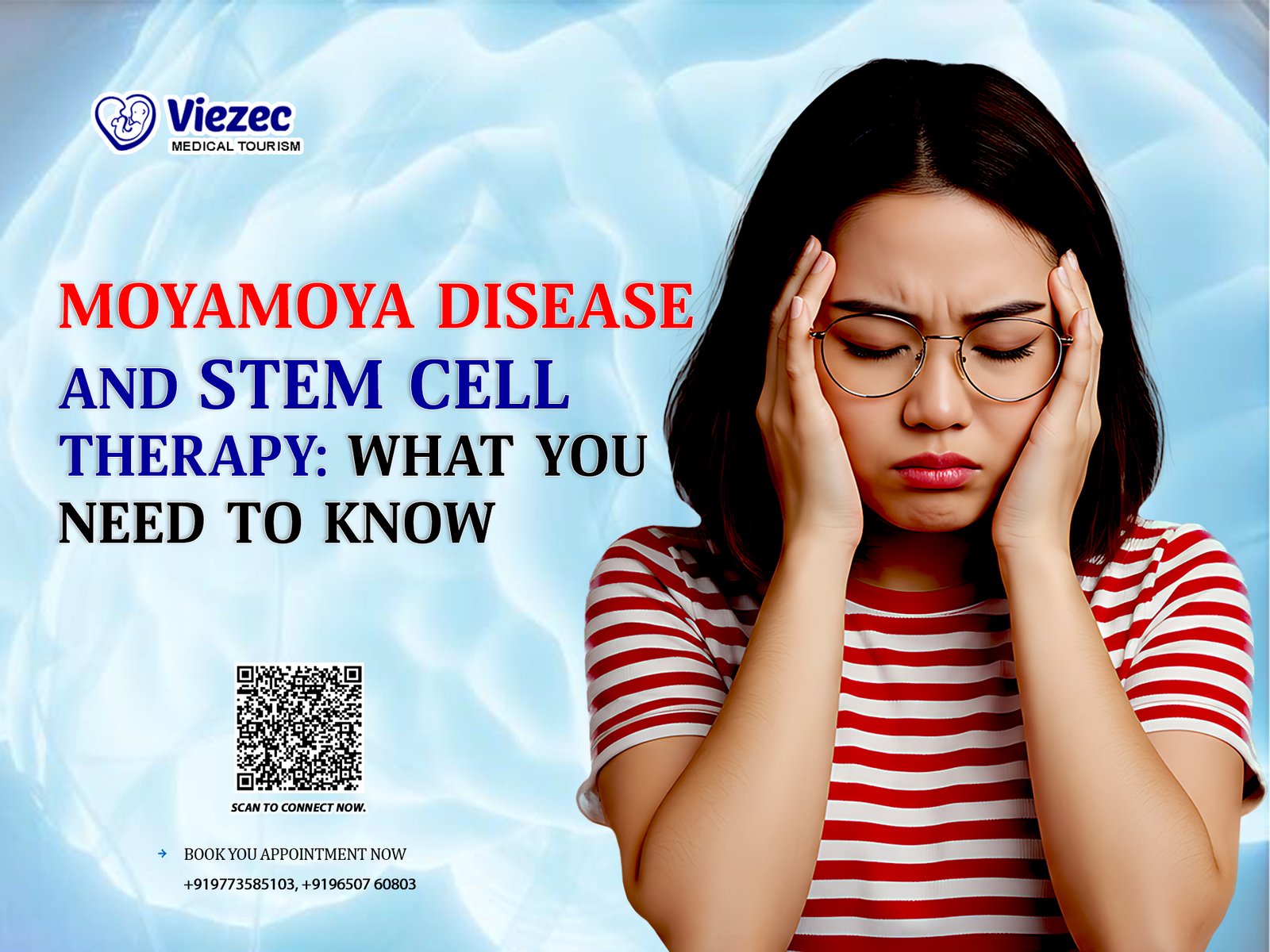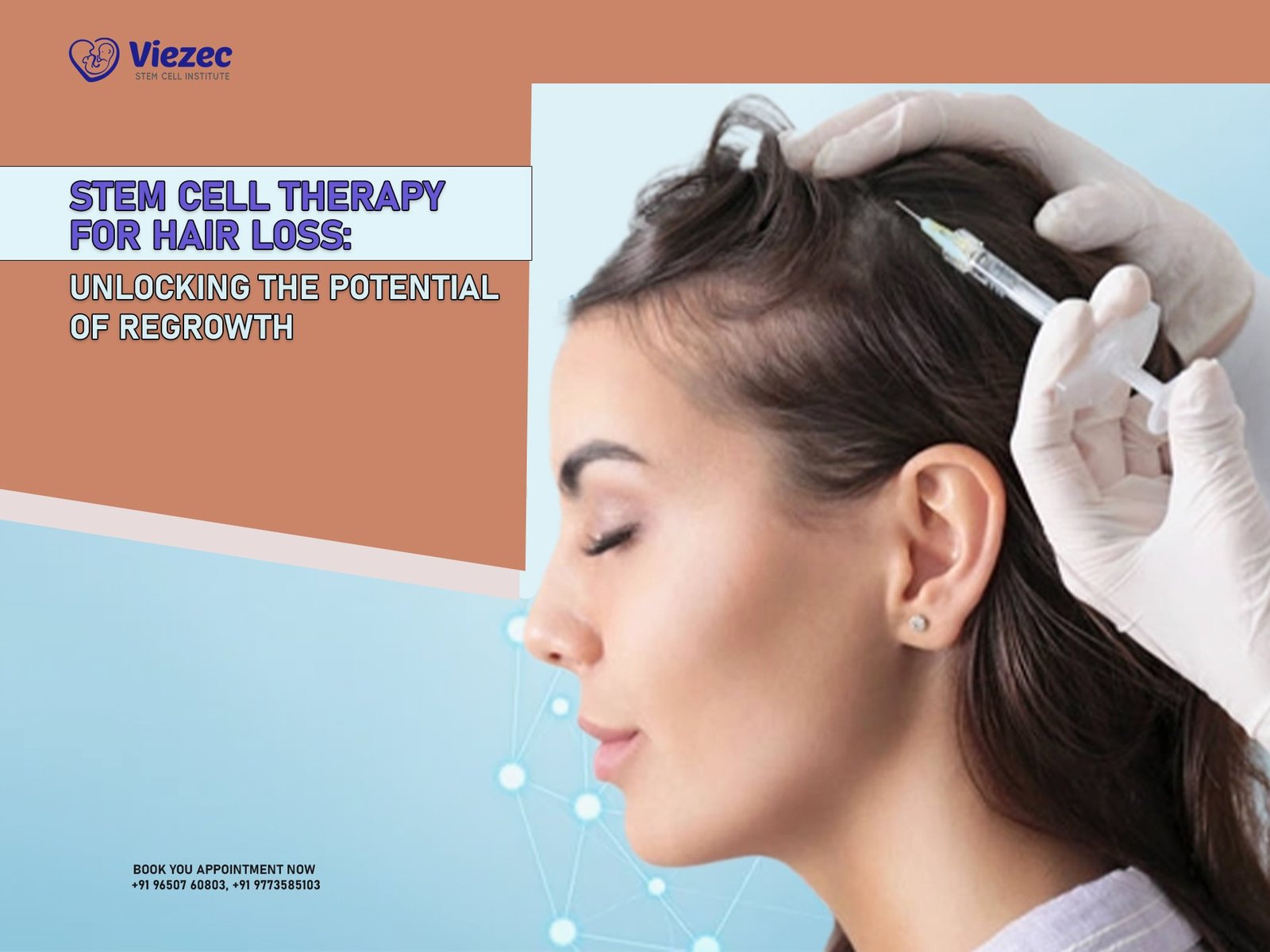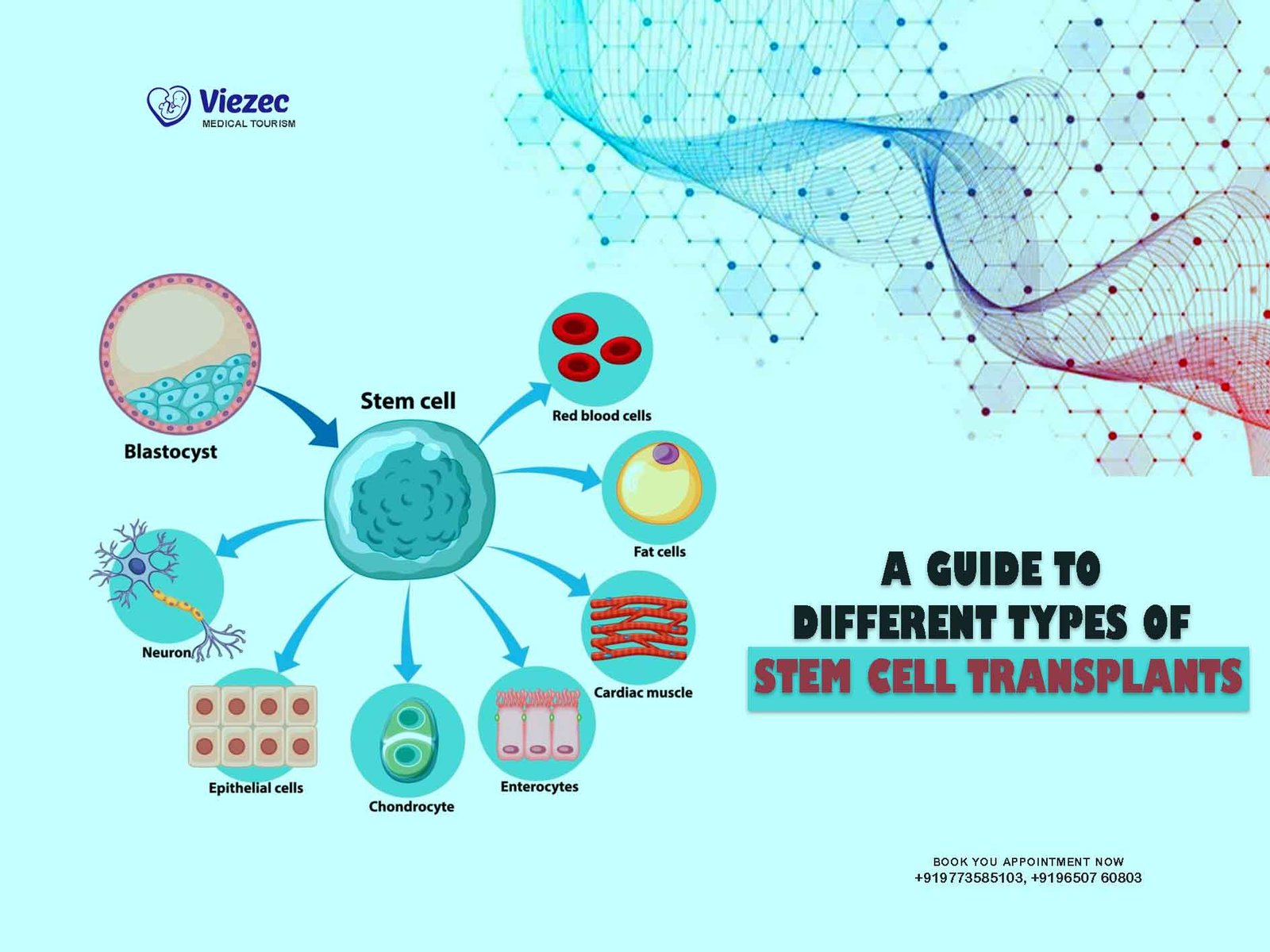Back pain affects millions of people worldwide. Whether it comes from degenerative disc disease, herniated discs, muscle injury, sciatica, arthritis, or spinal wear and tear, it can severely impact daily life. While traditional treatments—like physical therapy, medications, steroid injections, and surgery—help some patients, others continue to struggle with long-term pain.
This is where stem cell therapy for back pain has gained significant attention. Stem cell treatment is part of a broader group of treatments known as regenerative medicine, which focuses on helping the body repair damaged tissues rather than simply masking pain. Although stem cell therapy is still being studied, many patients and clinicians see promising results in improving mobility, reducing inflammation, and accelerating tissue healing.
Below is an in-depth, evidence-informed, easy-to-understand guide covering everything you need to know about stem cell therapy for back pain
What is Stem Cell Treatment for Back Pain?
Stem cell therapy for the spine uses mesenchymal stem cells (MSCs)—often collected from bone marrow or fat tissue—to promote healing in damaged spinal tissue. These cells can potentially help repair:
-
Herniated or bulging discs
-
Degenerative disc disease
-
Facet joint arthritis
-
Chronic low back pain
-
Sciatica or nerve-related pain
-
Spinal ligament or muscle injuries
Why Mesenchymal Stem Cells?
Mesenchymal stem cells (MSCs) are commonly used in regenerative treatments because they have a strong ability to repair and support damaged spinal tissues. They create a healing environment that helps reduce pain and improve function naturally.
-
Calm inflammation around injured discs, nerves, and joints
-
Encourage regeneration of tissues such as cartilage, ligaments, and soft structures
-
Assist the body’s natural cellular repair process
-
Release healing proteins and growth factors that accelerate recovery
How Stem Cell Therapy Works for Back Pain?
The goal is to stimulate the body’s natural ability to repair the spine. Stem cells are injected into damaged spinal structures under imaging guidance (fluoroscopy or ultrasound).
What Stem Cells Do Inside the Spine?
Once injected, MSCs may:
-
Reduce chronic inflammation around nerves and discs
-
Promote repair of worn-out disc tissues
-
Support cartilage regeneration in facet joints
-
Improve blood flow and healing environment
-
Slow down degenerative changes
This doesn’t mean it works for everyone or replaces surgery in severe cases, but many patients experience noticeable improvement.
Discover if Stem Cell Therapy Can Help You!
Book a Free Consultation with Our Experts at Viezec !
Conditions That Stem Cell Therapy May Help
Patients with the following back conditions may consider stem cell treatment:
Degenerative Disc Disease
Degenerative Disc Disease occurs when spinal discs lose hydration and structural integrity, leading to chronic back pain and reduced mobility. Stem cell therapy for DDD may help regenerate disc tissue, improve disc height, and reduce inflammation around spinal nerves.
-
Regenerates damaged disc tissue: Mesenchymal stem cells (MSCs) can stimulate repair of worn-out cartilage and disc fibers.
-
Reduces chronic inflammation: Stem cell injections help calm inflamed tissues surrounding the discs and facet joints.
-
Supports spinal health and mobility: Patients may experience improved flexibility, reduced nerve compression, and long-term pain relief.
Herniated or Bulging Discs
Stem cell therapy may help regenerate the damaged outer layer of herniated or bulging spinal discs while reducing inflammation around irritated nerves, offering a potential non-surgical solution for chronic back pain.
-
Promotes repair of the annulus fibrosus, improving disc stability and hydration.
-
Reduces nerve compression and inflammation, which may relieve sciatica and localized back pain.
Facet Joint Syndrome
Facet joints can degenerate or become inflamed, leading to chronic back pain and limited mobility. Stem cell therapy using mesenchymal stem cells (MSCs) may help regenerate cartilage, reduce inflammation, and support overall joint health.
-
Cartilage repair and regeneration: MSCs may stimulate the growth of healthy cartilage in arthritic facet joints.
-
Pain and inflammation reduction: Targeted stem cell injections can help alleviate chronic back pain associated with facet joint degeneration.
Chronic Low Back Pain
For patients experiencing chronic low back pain lasting more than 3–6 months, stem cell therapy offers a potential regenerative solution that may reduce reliance on long-term medications while promoting spinal tissue repair and improving overall mobility.
-
Regenerative benefit: Mesenchymal stem cells (MSCs) can help repair degenerated discs, ligaments, and joint tissues, addressing the root cause of chronic back pain.
-
Inflammation reduction: Stem cell injections may calm nerve inflammation, reduce pain signals, and improve quality of life without the side effects of prolonged drug use.
Sciatica / Nerve Pain
Stem cell therapy can target spinal nerve inflammation and promote healing in irritated nerve roots, providing potential relief for chronic sciatica and nerve-related back pain.
-
Reduces inflammation around compressed or irritated nerves, helping alleviate radiating leg pain.
-
Supports regenerative repair of damaged nerve tissues and surrounding soft tissues through mesenchymal stem cell injections.
Spinal Stenosis
Stem cell therapy cannot fully reverse spinal stenosis, but it may help reduce nerve compression and improve mobility by targeting inflammation and supporting tissue repair.
-
May relieve pain caused by compressed spinal nerves and inflamed discs
-
Can complement physical therapy and other non-surgical back pain treatments to enhance spinal function
Benefits of Stem Cell Therapy for Back Pain
Stem cell therapy offers a promising approach to managing chronic back pain by supporting natural tissue repair. It focuses on addressing the root causes rather than just masking symptoms with medications or injections.
-
Non-surgical alternative: Ideal for patients seeking regenerative medicine options without spine surgery.
-
Tissue regeneration: Stimulates repair of discs, ligaments, and facet joints damaged by degeneration or injury.
-
Reduced inflammation: Helps calm inflamed spinal nerves and surrounding soft tissue, improving mobility.
-
Potential long-term relief: Many patients experience sustained improvement in pain and function over months to years.
-
Autologous and safe: Using your own mesenchymal stem cells lowers the risk of immune rejection or complications.
Start Your Regenerative Journey Today!
Contact Viezec for Personalized Stem Cell Therapy Plan
Recovery Timeline and What to Expect
Recovery after stem cell therapy for back pain is typically faster than traditional surgery, but it varies based on the individual and severity of the condition. Patients should follow post-procedure guidelines to maximize results.
-
Week 1: Mild soreness or discomfort at injection sites is common; light daily activities are encouraged.
-
Weeks 2–6: Inflammation around nerves and joints gradually decreases; mobility improves with gentle exercise.
-
Weeks 6–12: Pain relief becomes more noticeable, and patients may begin physical therapy to strengthen spinal support.
-
3–12 Months: Maximum regenerative benefits are often observed; improved function and reduced chronic pain continue over time.
What the Current Research Shows
Research on stem cell therapy for spine health is expanding. Current scientific observations include:
-
MSCs may slow down the progression of degenerative disc disease.
-
Disc hydration improvements have been seen in some MRI follow-ups.
-
Many patients report decreased pain and increased function compared to baseline.
-
Regenerative medicine combined with physical therapy can enhance results.
Although research is still evolving, early outcomes are promising, especially for mild to moderate degenerative spinal conditions.
Stem Cell Treatment vs. Traditional Back Pain Treatments
Traditional Options
Conventional treatments for back pain typically focus on symptom management rather than tissue repair. These approaches can provide relief but may not address the underlying cause of chronic pain or spinal degeneration. Common traditional options include:
-
Pain medications such as NSAIDs or muscle relaxants
-
Physical therapy and targeted exercise programs
-
Chiropractic care and spinal adjustments
-
Cortisone or steroid injections to reduce inflammation
-
Spinal ablation procedures to block nerve pain
-
Surgery, including microdiscectomy, spinal fusion, or decompression
How Stem Cells Compare
| Factor | Traditional Treatment | Stem Cell Therapy |
|---|---|---|
| Goal | Pain reduction | Tissue regeneration + pain reduction |
| Recovery time | Varies | Minimal |
| Longevity | Often temporary | Potentially longer lasting |
| Surgery alternative | No | Sometimes yes |
| Inflammation control | Good (temporary) | May provide long-term benefit |
Who is a Good Candidate for Stem Cell Treatment?
Stem cell therapy for back pain is most effective for patients whose symptoms persist despite conventional treatments. This non-surgical regenerative medicine option targets chronic back pain, spinal degeneration, and degenerative disc disease to help reduce inflammation and promote tissue repair.
You may be suitable if you:
-
Have chronic back pain lasting more than 3–6 months that hasn’t responded to physical therapy, medications, or steroid injections.
-
Are dealing with degenerative disc disease, herniated discs, or bulging discs causing persistent discomfort.
-
Prefer a non-surgical treatment option to potentially improve mobility and reduce inflammation naturally.
Who May Not Be a Candidate?
Stem cell therapy may not be appropriate for everyone. It is usually avoided in patients with:
-
Severe spinal deformities or advanced disc collapse requiring surgical intervention.
-
Advanced osteoporosis or other bone fragility conditions that reduce regenerative potential.
-
Active infections that increase the risk of complications.
-
Severe nerve compression where immediate surgical decompression is necessary.
Always consult a board-certified spine specialist or regenerative medicine physician to determine if stem cell therapy is appropriate for your specific back condition.
Recovery Timeline and What to Expect
Recovery after stem cell treatment for back pain varies per patient, but most notice gradual improvements in pain, mobility, and spinal function over time. Understanding this timeline can help you plan activities and physical therapy.
Week 1
Mild soreness at the injection site is normal, and rest is recommended.
-
Tenderness near injection or harvest site
-
Avoid heavy lifting or strenuous activity
-
Gentle walking encouraged
Weeks 2–6
Inflammation begins to decrease, and mobility slowly improves.
-
Reduced swelling and discomfort
-
Gradual improvement in movement
-
Light daily activities allowed
Weeks 6–12
Pain relief becomes more noticeable as tissues heal.
-
Better ability to perform daily tasks
-
Physical therapy may begin
-
Continued reduction in inflammation
3–12 Months
Patients often see maximum benefits with long-term improvement in back health.
-
Significant pain reduction and increased mobility
-
Enhanced spinal tissue repair
-
Lasting improvement for some beyond one year
Is Your Condition Eligible for Stem Cell Therapy?
Speak directly with our specialist.
Cost of Stem Cell Therapy for Back Pain
The cost of stem cell therapy for back pain can vary widely based on multiple factors. Since this treatment is part of regenerative medicine and considered investigational, pricing depends on your specific condition, the clinic, and the type of stem cells used.
-
Location of the clinic: Prices may differ between cities, regions, and countries.
-
Technology and techniques used: Advanced imaging guidance and processing equipment can influence cost.
-
Number of injections required: Some patients may need single or multiple sessions depending on severity.
-
Source of stem cells: Bone marrow-derived or adipose-derived mesenchymal stem cells can have different pricing structures.
Because stem cell therapy for chronic back pain is still emerging, most insurance plans do not cover regenerative procedures, so patients typically pay out-of-pocket.
Frequently Asked Questions
Stem cell therapy may reduce inflammation and support tissue repair, offering noticeable relief for many patients, though results vary.
Regenerative therapy can target degenerative discs, herniated discs, facet joint arthritis, chronic low back pain, and some nerve-related issues.
Candidates usually have chronic pain not relieved by conventional treatments, mild-to-moderate degeneration, and good overall health.
It’s minimally invasive, focuses on tissue repair rather than masking pain, and outcomes depend on individual condition severity.
Many patients experience pain reduction and improved mobility, but effectiveness depends on age, condition, and type of stem cells used.
Final Thoughts
Stem cell treatment is one of the most exciting developments in regenerative medicine and orthobiologics. For many people, it can help reduce pain, improve mobility, and support tissue healing, offering a natural alternative to surgery. While it is not suitable for every condition and research is still ongoing, the therapy can provide significant improvements in quality of life for the right patients.
List of References
“Stem Cell Therapy for Intervertebral Disc Regeneration: A Systematic Review”
https://pubmed.ncbi.nlm.nih.gov/30510996/
“Mesenchymal Stem Cell Therapy for Degenerative Disc Disease: Clinical Evidence and Limitations”
https://pubmed.ncbi.nlm.nih.gov/30971266/
“Injective Mesenchymal Stem Cell Treatment for Chronic Low Back Pain: Safety and Efficacy”
https://pubmed.ncbi.nlm.nih.gov/28034957/
“Biological Approaches to Treat Intervertebral Disc Degeneration: Stem Cell-Based Therapies”
https://pubmed.ncbi.nlm.nih.gov/32178140/
“Regenerative Medicine for the Spine: Current Clinical Evidence Using Mesenchymal Stem Cells”









